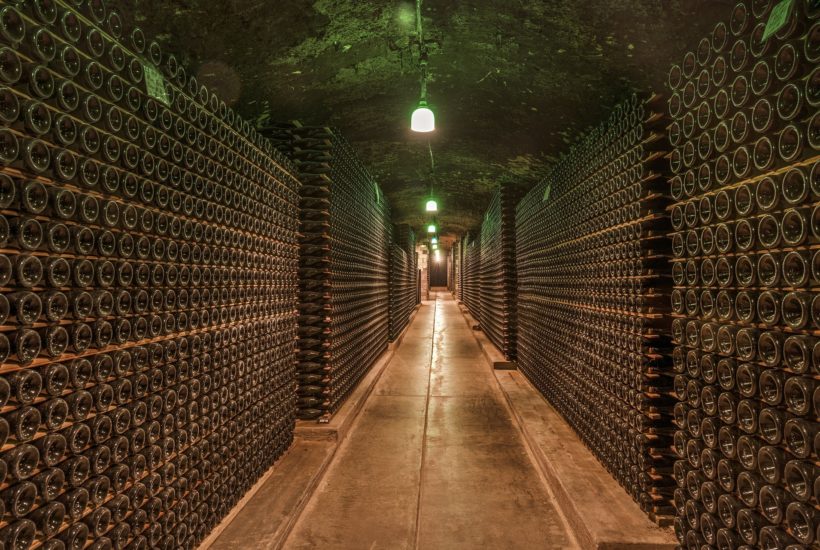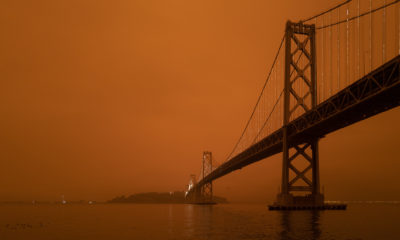Business
The wine industry is relying on fancy labels and marketing rather than looking at the data to understand what wine drinkers really want… UNTIL NOW
How to pick the right bottle of wine? When confronted with hundreds on the shelves we might look at ‘medals’, labels, grape variety or even the price tag to try and determine which fits us best. Wine cellars sink millions into steering our choice for better or for worse. Palate Club flips the process on its head, it studies each customer’s taste, and uses that to suggest the best wines for us.

Wine is one of the most elusive of customer goods. For some it is a luxury of the highest order, for others a casual drink to enjoy over dinner or with friends. There are thousands of bottles and varieties to choose from, each competing for our attention. Wineries use decorative labels, fancy medals, or expert reviews to try and sell us the bottles they think we want. But wine innovators at Palate Club are striking out in an entirely different direction: giving us the wines we actually want. To do this they are using cutting edge data science to uncover the truths of our own preferences and tastes, and sell us wines they know we will enjoy.
Powerful marketing pervades the wine business
Wine cellars have to try to make their product stand out. Ideally they do so with exceptional quality, taste and technique, but these characteristics are difficult to signal to a consumer. Instead many wineries turn to marketing. Comfortable that they know what we will enjoy, they spend liberally on designers, artists, hefty bottles and elegant crates. These in turn, become the measures by which we judge the wines in the store, forcing the others to pay up or pull out.
Marketing and sales is but one component of the many challenges facing new, especially small, wineries. Yet it is also the area of expertise of the massive industrial ‘wineries’ we find increasingly present in the globalized market. These companies can afford to sink fixed costs into design as they are selling hundreds of thousands of bottles. Then they expand profit margins by cutting costs elsewhere, such as in grape quality or origin.
This means that the basic tools for a consumer to judge from are useless at best, and actively misleading at worst. How then are we to distinguish real quality in the wine industry? How can we find the bottle which suits our own unique palate? Well, many customers trust in wine ratings or elegant medals to help them narrow down their choice, unfortunately even those have their flaws.
Unreliable signals blur the field
Wine should be a labor of love, and the fine aromas of a good bottle should be noted and enjoyed by all. Many wine experts understand this principle well, but the means they have found to communicate them to lay-persons (who make up the majority of their consumers) have not always been ideal.
The first of these is the wine rating system, or rather, the many similar ratings systems. Popularized for the masses by Robert Parker, the most common of these rates wines from 50 to 100, with the 100 reserved for the truly exceptional wines. Unfortunately, even the most prestigious of tasters have started turning on each other for inflating their scores. Inflation among the less scrupulous is even more pervasive, to the point where some complain that the scores themselves have become all but meaningless…even as the wine industry falls over itself to throw them at the consumer.
Then there are the medals offered for the ‘best’ wines at conventions or competitions. These have an even worse reputation than the ratings. Many competitions will hand them out to up to 50% of the wines who (pay) to show up. These shiny badges that wineries can pay to have adorn their bottles then become another signal which customers can use, but still with little guarantee of quality. And no guarantee whatsoever that the wine will fit their personal taste.
Why look for objective rankings in a fundamentally subjective field?
Wine experts love to talk our ears off about what the best wines are but share in the very same breath the ‘wisdom’ that each taster and wine pairing are unique. This should come as no surprise to anyone who enjoys wine. What you like in your wine, might be very different from your friend, family or even spouse likes in theirs.
Wine flavors come in so many different subtle varieties that most of us cannot even describe them, much less consciously notice them. But you can bet your subconscious can. This is the fundamental truth that makes the wine industry’s efforts to market wine so flawed. They try to force objective criterion on a product which, like music, is appreciated differently by each consumer.
This is where the innovative revelation, or revolution, that Palate Club is spearheading comes into play. They understand wine’s objective qualities and have expert sommeliers teams taste test and rate them. Not for the consumer, but for a computer. The data points (up to two hundred per wine) teach the algorithm about what is in a bottle…and the customer teaches the algorithm what they look for in a wine.
Personalized wine delivery brought to you by the combination of tech and talent
Palate Club would love to send you a blind tasting kit. For them it’s the perfect way to get an impression of your taste in various wines. You get them delivered to your door, taste them, then rate them easily from their app. This gives them data on your preferences, by connecting your ratings to the wines and their individual characteristics. The next bottle they send you through their subscription system, or offer you for purchase on their online store, will be even better suited to your taste. And once you rate that…well, you get the idea.
The idea is as simple as it is novel: put the consumer at the heart of the wine equation once again. And for a product whose enjoyment is so subjective, it just makes sense. This would change the whole equation in wine marketing, but not in wine making. Wine makers still want to deliver the best product, only now they wouldn’t have to worry so much about what the bottle might look like. Instead the customers whose taste profile best matches the wine would get it delivered to them (or be able to buy it through the e-commerce wine store).
Putting the winemakers directly in touch with the consumers most likely to appreciate their wines is a huge boost for both. Producers (especially the small scale or artisanal, often international, primarily sustainable ones that Palate club prides itself on working with) gain from the exposure, end to endless marketing, and targeted sales. Consumers get a better variety of choice, all the while more likely to appeal to their specific taste. Everybody wins.
What consumers really want
If we look at the trend in modern consumption from Amazon to Facebook, Spotify or Netflix, we consistently see that customers love personalized recommendations. Customers in the modern world are faced with difficult and time consuming choices on a daily basis. Taking those out of the equation, while guaranteeing customers the result of a good choice, is a huge pain point relieved.
Nowhere is this more evident than in the wine industry, in which customers face hundreds of products with poor signaling where their subjective tastes are largely unaccounted for. With Palate Club’s vision, winemakers will be able to concentrate on their craft, marketers may cry a little, but consumers will be the ultimate winners. Enjoying the comforts of a wine bottle chosen specifically for them, from the comfort of their home with a few clicks on the app.
—
(Featured image by skeeze via Pixabay)
DISCLAIMER: This article was written by a third party contributor and does not reflect the opinion of Born2Invest, its management, staff or its associates. Please review our disclaimer for more information.
This article may include forward-looking statements. These forward-looking statements generally are identified by the words “believe,” “project,” “estimate,” “become,” “plan,” “will,” and similar expressions. These forward-looking statements involve known and unknown risks as well as uncertainties, including those discussed in the following cautionary statements and elsewhere in this article and on this site. Although the Company may believe that its expectations are based on reasonable assumptions, the actual results that the Company may achieve may differ materially from any forward-looking statements, which reflect the opinions of the management of the Company only as of the date hereof. Additionally, please make sure to read these important disclosures.

-

 Crowdfunding1 week ago
Crowdfunding1 week agoStar Citizen Funding Soars as 2025 Becomes Its Most Successful Year Yet
-

 Crypto6 days ago
Crypto6 days agoCrypto ETF Inflows Signal Renewed Market Confidence
-

 Fintech2 weeks ago
Fintech2 weeks agoKraken Acquires Backed Finance to Boost RWA Strategy Ahead of 2026 IPO
-

 Biotech2 days ago
Biotech2 days agoSpain Joins First EU Joint Clinical Assessment Under New Health Technology Regulation
























